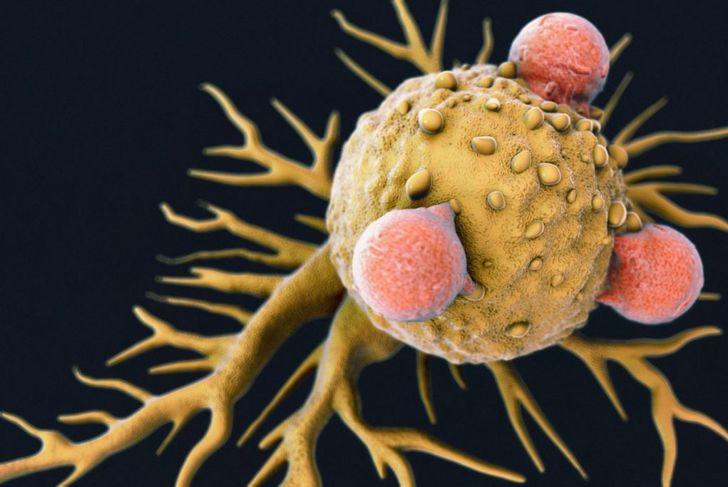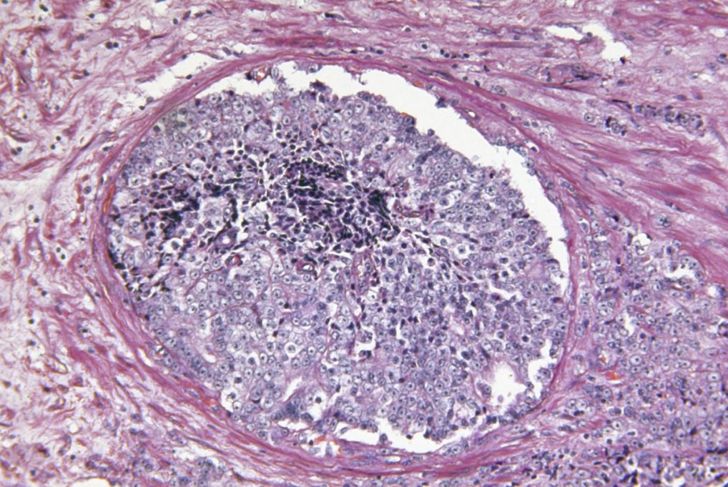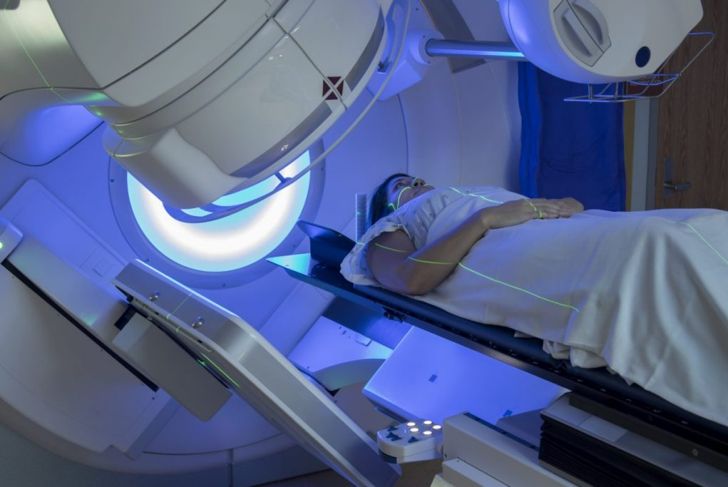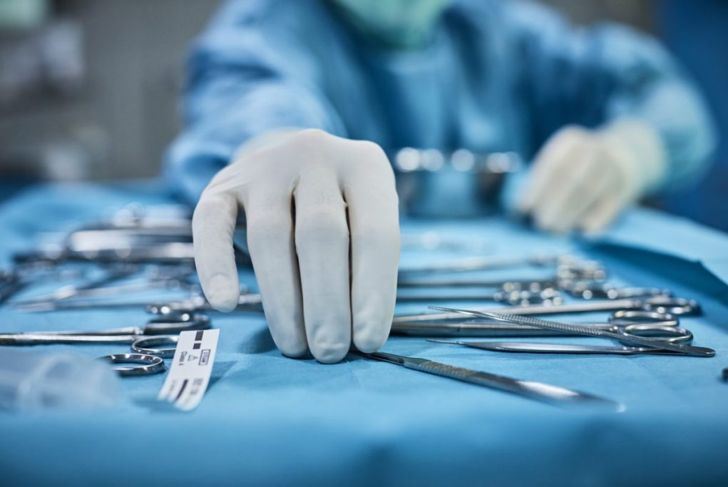Malignant fibrous histiocytomas (MFH) are malignant tumors (sarcomas) that grow in the soft tissues or bones. They are the most common type of sarcomas affecting soft tissues, but rare if they grow in a bone. In 2002, the World Health Organization changed the name of this type of tumor to undifferentiated pleomorphic sarcoma because research has yet to reveal the cell type from which it grows. However, experts still use the term malignant fibrous histiocytoma or MFH.
Symptoms
The main symptom of a malignant fibrous histiocytoma is a palpable lump or mass. These types of tumors are most likely to occur in the limbs, hands, or feet. MFH tumors tend to grow very quickly and may appear reddened and feel warm to the touch. Some MFH tumors cause pain, while others cause no discomfort at all.
Causes
There is no main cause of malignant fibrous histiocytomas, although researchers may have identified some related conditions. Receiving radiotherapy for another type of tumor may increase a person’s risk. Paget’s syndrome, a condition that affects bone cell growth, may also have a link to MFH tumors. A history of other types of sarcoma, such as Werner syndrome or Gardner syndrome, can make getting an MFH tumor more likely.
Diagnosis
Malignant fibrous histiocytomas are often difficult to see on an x-ray if the tumor is in the soft tissue. These growths require diagnosis and assessment by a doctor with expertise in tumors of the extremities. An MRI or CT scan can diagnose MFH tumors. Biopsies can identify the type and grade of the tumor. A PET scan will determine whether the cancer has spread to other parts of the body, such as the brain.
Risk Factors
Malignant fibrous histiocytomas are most likely to affect adults. Most people with this type of tumor are diagnosed between the ages of 32-80; the average age at time of diagnosis is 59. Men are slightly more likely to develop an MFH tumor than women, with a male to female ratio of around 1.2:1.
Grading
Doctors grade MFH tumors to classify the aggressiveness of the cancer. This helps determine the best course of treatment and the patient’s prognosis. Low grade (G1) tumors have a low likelihood of spreading to other areas of the body. Intermediate grade (G2) tumors have a moderate risk of growing and spreading. High grade (G3) tumors are the most aggressive type and are very likely to grow and spread.
Staging
Staging is slightly different than grading — this method helps doctors understand how far the condition has progressed. To determine the stage, the doctor takes into account the tumor’s grade, size, and whether it has spread to other areas such as the lungs. Stage I MFH tumors have a low grade and have not spread beyond their original location. Grade II or III tumors have a higher grade but have not reached the lymph nodes. Grade IV tumors have reached the lymph nodes and other areas of the body.
Surgery
Surgery can treat malignant fibrous histiocytomas and stop the tumors from growing or spreading to the lymph nodes. Ideally, the surgeon will remove the layer of normal tissue around the tumor at the same time, to ensure the removal of all the cancerous tissue. If removing this tissue proves impossible and the tumor is on a limb, doctors may consider amputation. If removal of the tissue around the tumor and amputation are both impossible due to the location of the tumor or other factors, surgeons will often remove as much malignant tissue as they can and treat the patient with chemotherapy at the same time. This reduces the risk of any remaining cancerous tissue growing or spreading.
Radiation Therapy
Radiation therapy can kill cancer cells or stop them from growing. This type of treatment is effective in stopping MFH tumors from re-growing in their original location. Doctors may also recommend radiotherapy before or after surgery, depending on the severity, type, and location of the tumor.
Treating Bone MFH Tumors
Doctors usually opt to treat MFH tumours in bones surgically. Surgeons may or may not reconstruct the bone using metal implants or bone grafts, depending on the location of the tumor. In some cases, they may recommend amputation of the limb, which they will remove above the level of the tumor site to increase the likelihood of catching all the cancerous tissue.
Prognosis
The prognosis for a person with a malignant fibrous histiocytoma depends on their tumor grade and stage, the size of the tumor, and their age at diagnosis. Low grade tumors are often completely cured following surgical removal. However, high grade tumors and those at stage III or IV have a poor prognosis. Prognosis is also worse if the person is older than 60 or if their tumor is larger than 5cm.

 Home
Home Health
Health Diet & Nutrition
Diet & Nutrition Living Well
Living Well More
More




















